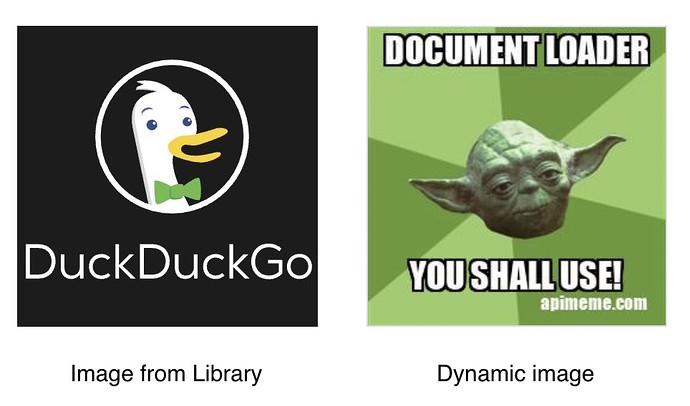Example to inject and load a dynamic image into the Hype preloader
It works like a charm. Today I added this to a completely automated process and the files run like regular exports with Hype treating the data the same. Very effective technique for dynamic content!
Update: Here is an example pulling in an image from an API and preloading it like usual with Hype.
Preloading with Hype Document Loader.hype.zip (62,1 KB)
PS: There is also always the way to redirect Hype with the HypeResourceLoad callback
So, if you have fixed layout images you want to replace HypeResourceLoad is the way to go. On the other hand, if you have arbitrary sets of images you assign dynamically HypeDocumentData is much better in my opinion! What I like about it… no custom preloader or images flashes. Hype just treats it like native preloading.
